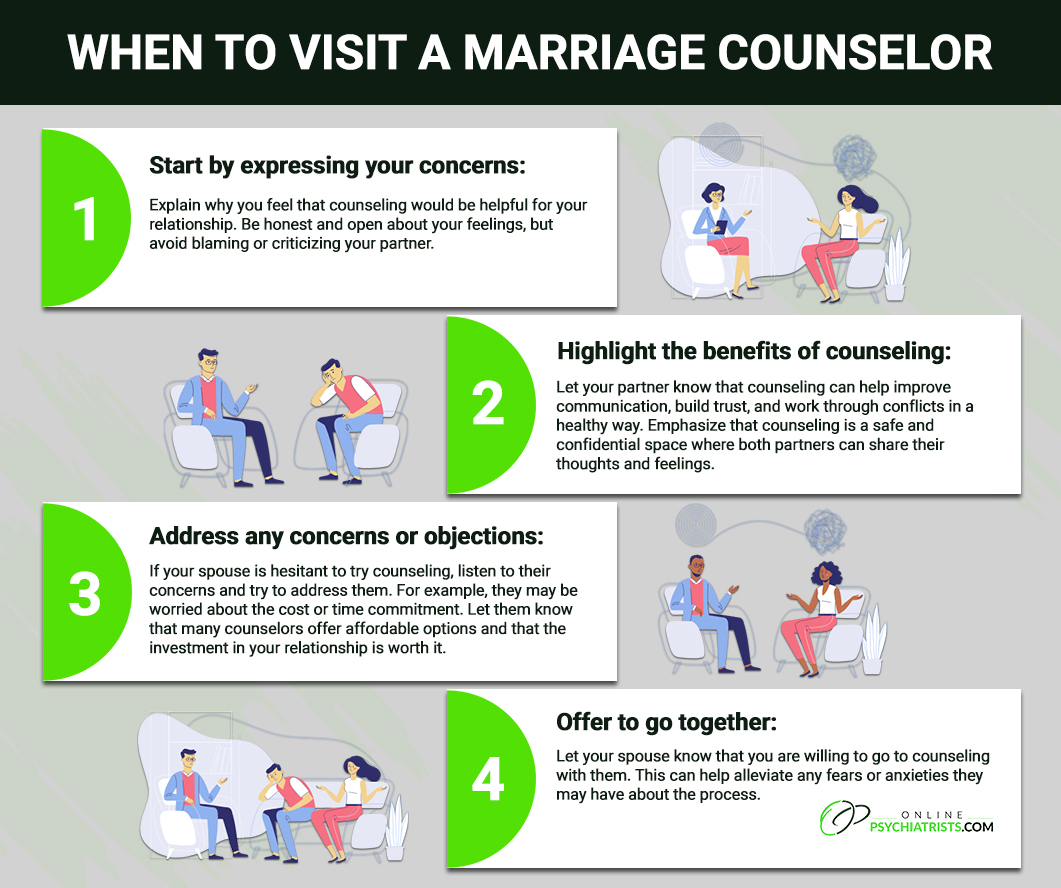An Unbiased View of Aim Point Counseling
An Unbiased View of Aim Point Counseling
Blog Article
Aim Point Counseling Fundamentals Explained
Table of ContentsAim Point Counseling for BeginnersSome Ideas on Aim Point Counseling You Need To Know5 Easy Facts About Aim Point Counseling DescribedGetting The Aim Point Counseling To WorkSome Known Details About Aim Point Counseling Facts About Aim Point Counseling Revealed
The longitudinal design involves a pre-treatment study and 2 follow-up studies at 3- and 12-months post-intervention. The research study is embeded in 8 Relationships Australia Victoria centres, throughout urbane, outer residential areas, and regional/rural websites. Relationships Australia, a non-government organisation, is the largest supplier of pair coaching and connection services in Australia.
These high prices of relationship breakdown have been continually linked with adverse wellness effects for both adults and children following divorce/separation.
Aim Point Counseling Can Be Fun For Everyone
Longitudinal researches likewise suggest that youngsters of separation have a higher incidence of psychological problems, alcohol and drug usage, and dangerous sexual practices [7] Although the impacts of divorce and splitting up can be harmful, research suggests that high relationship disharmony in intact pairs is also most likely to have unfavorable outcomes.
Research study to day has determined both pair and private variables that might contribute to relationship disharmony. These include connection contentment and dedication at the couple level, and depression at the individual level.
Excitement About Aim Point Counseling
Partnership contentment has actually been the most typical outcome variable identified in greater than 200 examinations of couple counselling [11,12] Studies have found considerable improvements in relationship satisfaction from pre- to post-treatment [13,14] and over the course of one to 2 years following coaching [15] In these studies, connection satisfaction was most regularly assessed utilizing the Dyadic Modification Scale (DAS) [16] While a lot of researches suggest enhancements in relationship contentment following pair coaching, they are restricted by the examples and steps used, greatly short-term follow-up time frameworks, and analyses that do not account for the dyadic nature of couple information., is another typically examined connection result.
To sum up, research study shows that couple-specific variables along with private variables might forecast the end results of pair coaching and partnership solutions. The causal instructions of these connections, however, is less clear. These observations are necessary, since, to justify and direct the application of partnership solutions such as couple coaching, empirical proof has to check out both the end results of connection solutions and the variables that anticipate successful therapy.
For that reason, there is a growing consensus that effectiveness studies ought to be matched by efficiency research to best inform medical practice [ 29] The minimal performance study that exists to day recommends that couple counselling can improve results such as partnership fulfillment [33,43], communication abilities and basic health [44], at the very least in some European nations.

We presently understand little about the accounts of couples who look for out connection education compared with those that seek relationship coaching, or the results of these programs. Anecdotal proof suggests that there may be substantial distress amongst at least some pairs seeking relationship education and learning.
The smart Trick of Aim Point Counseling That Nobody is Talking About
Feedback includes participants completing sets of questions about their relationship (e.g. measures of social issues), and receiving information on what their scores suggest. Cognitive-behavioural techniques advertise altering cognitions to promote favorable connections. These might consist of promoting reasonable attributions/expectations around adverse partner behavior [46] Finally, in skills training, pairs go to lectures or presentations on connection skills, and practice these throughout facilitator-led tasks [ 45]
These impacts have lingered for as much as 4 years in some studies [47] These meta-analyses highlight limitations in the current literature on partnership discover here education. Particularly, the majority of researches involved pairs from top socio-economic backgrounds who were not experiencing high partnership dissonance [47,48] This sample profile may not stand for clients that usually present for relationship education.
Getting My Aim Point Counseling To Work

Extremely little study has actually checked out the relative advantages of pair coaching and relationship education and learning programs. As customers are most likely to self-select into these service types, it is unclear whether characteristic relationship distress accounts existing to every service type, or indeed whether there is an interaction in between providing profile, service kind and outcome.
(https://sketchfab.com/a1mpoint)
Hence, we have actually consisted of a 12-month follow-up to assess longer-term patterns and results.
For that reason, we propose to use multi-level statistical modelling treatments that regulate for the inter-dependence of pair information to examine any treatment results. The specific goals of the ECC study are to: 1. Map profiles of customers looking for area agency-based pair therapy vs. connection enhancement programs in regards to socio-demographic and relationship indications (such as partnership fulfillment, partnership commitment, social problems, and factors for participating in), along with health (such as anxiety, basic wellbeing) and wellness service usage (eg.
2. Determine whether couple coaching and partnership education solutions improve three- and twelve-month outcomes for partnership complete satisfaction, dedication, and anxiety, utilizing analytical analyses appropriate to pair information. 3. Figure out the loved one contributions of customer aspects (private and pair) and therapy/education variables to outcomes at 3- and 12-months, and to sustainability of end results with time.
More About Aim Point Counseling
Multi-level modelling to identify pre-post differences, regulating for dyadic (pair) level. To add to the literary works evaluating the efficiency of community-based pair counselling.
Report this page